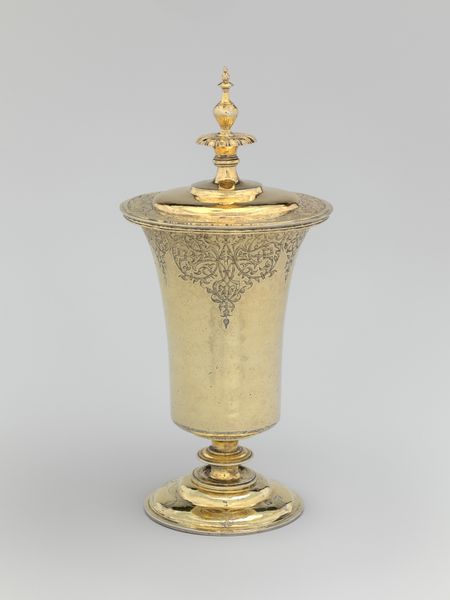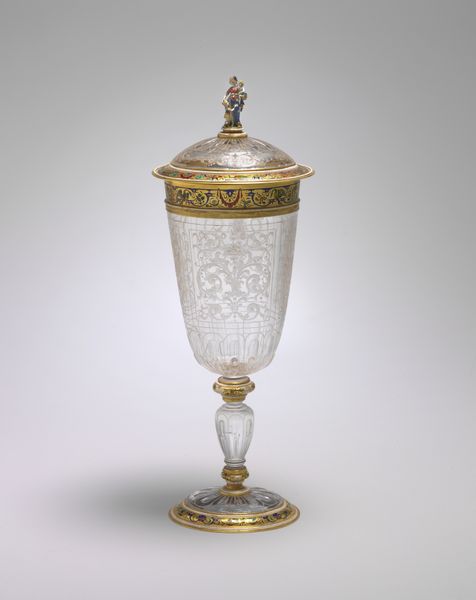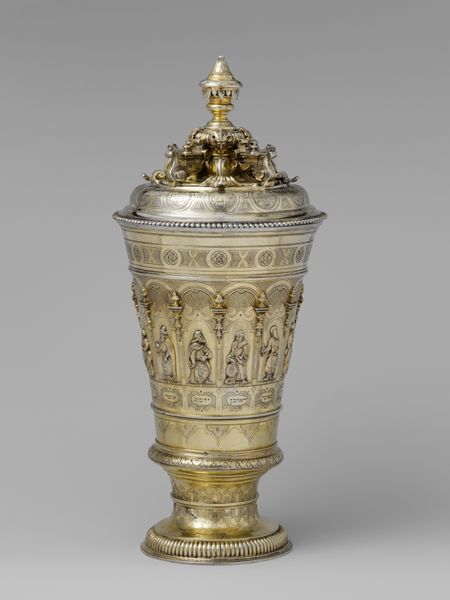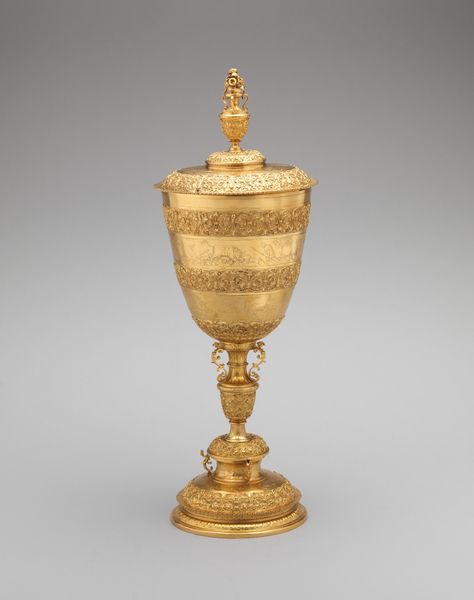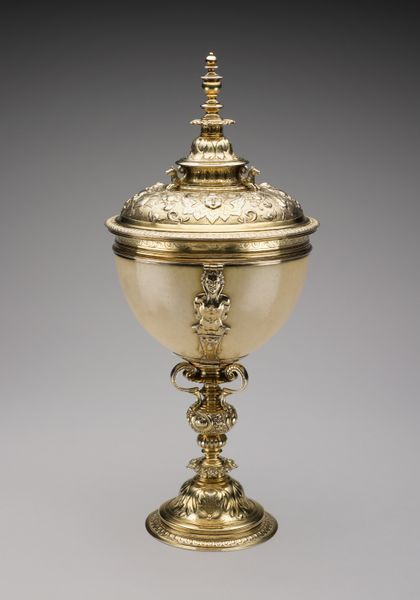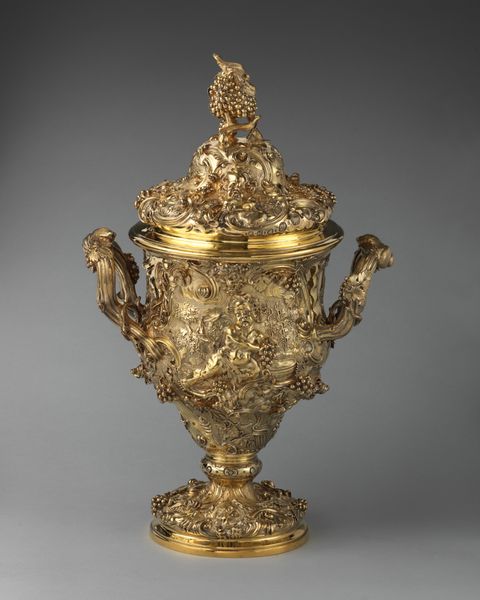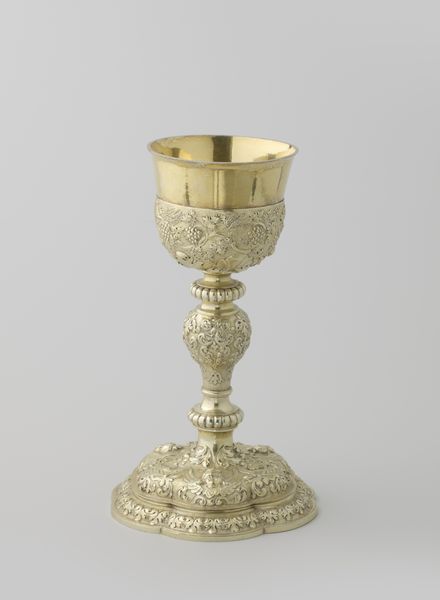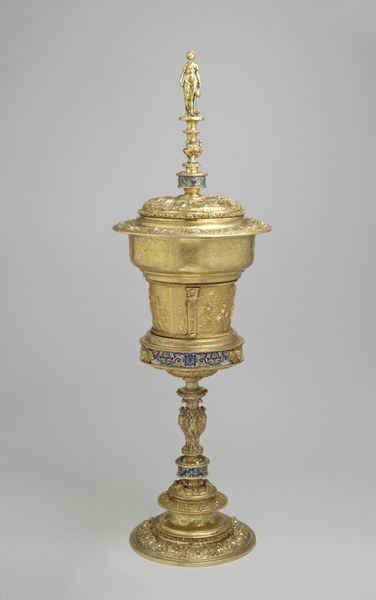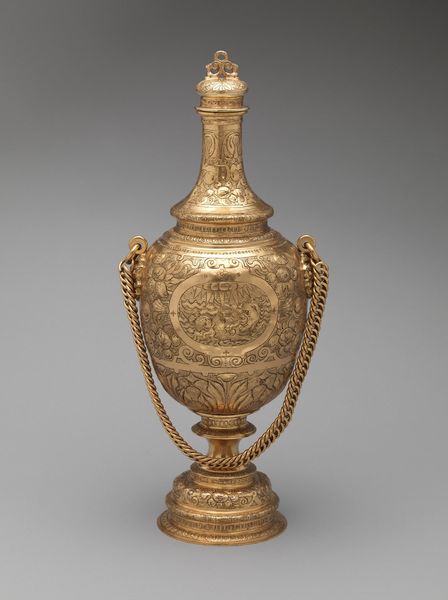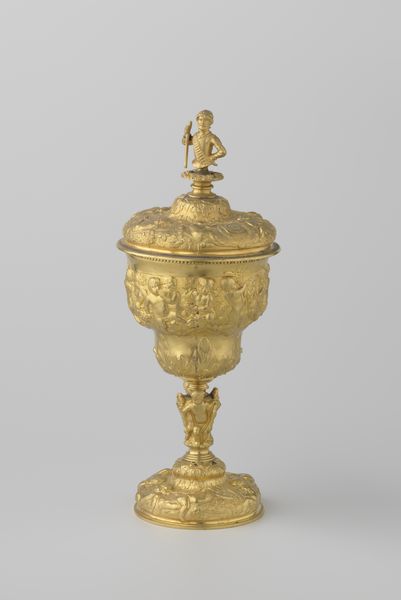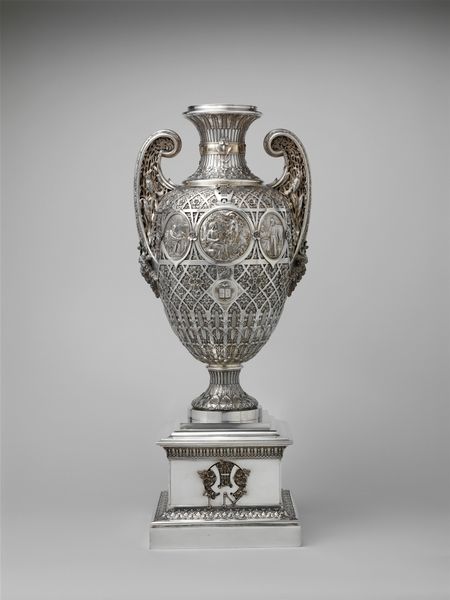
silver, metal, relief, sculpture
#
medieval
#
silver
#
germany
#
metal
#
relief
#
sculpture
#
medieval-art
Dimensions: Overall (ab): 11 1/2 x diam. 5 1/8 in. (29.2 x diam. 13 cm) vessel (a) only: 7 1/16 x diam. 4 9/16 in. (17.9 x diam. 11.6 cm) Top (b): 4 1/8 x diam. 5 1/8 in. (10.5 x diam. 13 cm)
Copyright: Public Domain
Editor: This Covered Beaker, made by Hans Greiff around 1470, is quite striking! It’s crafted from silver and currently resides at the Metropolitan Museum of Art. I'm initially drawn to the repetition of the teardrop shapes; they remind me of scales. How would you interpret this piece, looking at it with your expert knowledge? Curator: The repetitive teardrop or scale-like patterns are indeed significant. Notice how they flow from the base to the lid? In medieval symbolism, such patterns could represent abundance, prosperity, and even fertility. The vessel itself becomes a symbolic container of life's blessings, reinforcing ideas of generosity and communal well-being. Editor: That's fascinating! I hadn't thought of it in terms of abundance. What about the figure at the very top? Curator: Good eye. The figure perched atop—is it a child or cherub? That can signal innocence, hope, or even divine favor. Consider its placement – elevated, almost heavenward, suggesting a connection between the earthly and the spiritual. Are there other visual elements you think draw attention? Editor: I also notice the figures around the base! They look like little workers. Curator: Exactly! Their inclusion roots the vessel back to the earthly realm, emphasizing the labor and craftsmanship that went into creating such an object. It tells us it was not created out of nothing, reinforcing a cultural respect for skilled craft. Are these opposing realms creating new meaning together? Editor: That’s amazing. Seeing how different symbolic layers interact provides such a richer understanding of the piece than just observing its aesthetic. Thank you! Curator: Absolutely. By understanding its symbolism, we are looking at the cultural values, beliefs, and the hopes of a specific period.
Comments
No comments
Be the first to comment and join the conversation on the ultimate creative platform.
